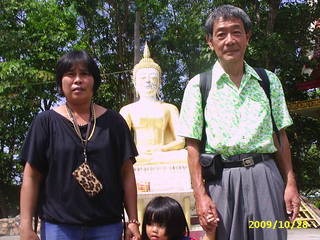2011年12月15日
火論:花形の時代=玉木研二
(Mainichi Japan) December 13, 2011
Remember past enthusiasm for nuclear science as we edge towards non-nuclear future
火論:花形の時代=玉木研二
<ka−ron>
It's been pointed out in many quarters that the field of nuclear power in Japan has been failing to attract the interest of students.
There was a time not so long ago, however, that nuclear energy was at the cutting edge -- the superstar of scientific disciplines.
原子力分野への学生の志望減退が指摘されているが、いうまでもなく往時は最先端をいく花形分野だった。
One can catch a glimpse of this by looking at how nuclear researchers were depicted in the literature and films of the period -- although hints of misgivings are also easily found.
小説や映画に登場する研究者らに、その時代が抱いていたそんなイメージがのぞく。
Take, for example, Yasushi Inoue's novel "Hyoheki" (Ice wall), first serialized in the Asahi Shimbun newspaper in 1956 -- the same year the government formed the Japan Atomic Energy Commission and the industrial world entered the nuclear industry in a serious way.
例えば、原子力委員会が設置され、産業界も原子力事業に本格的に参入した1956(昭和31)年、朝日新聞で井上靖の長編「氷壁」の連載が始まった。
"Hyoheki" is primarily the story of a man and a woman stranded in the mountains. However, the novel also depicts a senior researcher for a major company lab as a representation of the era's scientific rationalism.
山岳の遭難事故を軸とした男女の物語だが、現代の科学性、合理性の象徴のような大企業の幹部研究者が出てくる。
When someone tells him that nuclear science "carries all the hopes of humanity" and "contains within it every potentiality," the researcher replies, "I don't think only humanity's bright dreams and possibilities are wrapped up in nuclear science.
彼が、話し相手から原子科学について<人類の夢がいっぱい詰め込まれているものなんでしょう。あらゆる可能性がその中にはいっている>と語りかけられて、こう言う場面がある。<強(あなが)ち原子科学の中に、明るい人類の夢や可能性ばかりが詰まっているとは思えませんな。
It also carries the possibility of humanity's ruin."
そこにはまた、人類の亡(ほろ)びの可能性も詰まっているわけです>
When Inoue wrote these words, the United States and the Soviet Union were locked in a nuclear arms race and conducting above-ground nuclear tests, while at the same time the "peaceful use" of nuclear energy was being trumpeted as possessing "limitless possibility."
当時、米ソの険悪な対立の中で競って軍事目的の核実験が行われ、一方で核エネルギーの「平和利用」と「無限の可能性」が錦の御旗(みはた)とされたころ。
In the cynicism expressed by the researcher Inoue depicted in the novel, one can see the author's own thoughts on nuclear technology seeping through.
研究者の皮肉を含む口ぶりに「危うさ」を感じ取っていた作者の思いがにじんでいるのかもしれない。
In 1959, the Tokyo Shimbun newspaper ran a serialized novel by noted author Fumiko Enchi called "Watakushi mo moeteiru" (I, too, am burning).
59年、東京新聞に連載を始めた円地文子の「私も燃えている」は、放縦な私生活を送りながら研究には無我夢中になる気鋭の若手原子物理学者が登場する。
In the story, a young, dissolute nuclear physicist lost in his research absorbs a lethal dose of radiation when he makes a mistake during an experiment.
彼は核融合実験のミスで大量の放射線を浴び、命を落とした。
Before dying, the man sums up the novel, saying, "I turned towards that thing all humanity hopes for: the peaceful application of nuclear technology.
And I bet my life on opening that door just a crack."
小説は<原子力の平和利用という人類のすべてが望む明るい方向へ向けて、一枚の扉を開きかけることに生命を賭けてしまった>と表現する。
Three years later, in 1962, film studio Toho Co. released a film titled "Gorath" in which nuclear power saves Earth from destruction by a mysterious object hurtling through space.
さらに3年後の62年、東宝特撮映画「妖星ゴラス」は原子力が人類を救うSFだ。地球衝突への軌道を謎の天体が進んでくる。
The entire world's nuclear energy is combined to create a propulsion device at the South Pole and shift Earth out of the way of the object. The nuclear engine, however, alters Earth's orbit.
「全世界の原子力を総結集」して南極に巨大な推進機関を設け噴射、地球の軌道を変えてやり過ごす。
Regardless of the story's plainly ridiculous premise, what can be seen in the film is a spirit true to the era in which it was made, with the countries of the world transcending national interests to save the Earth through nuclear power.
このむちゃと危険は言うまい。冷戦のさなか、世界が国を超え力を合わせて原子力を媒介に地球を助ける発想が、いかにもこの時代らしい。
In the period from the mid-1950s to the mid '60s, the image of nuclear power was forged by anxiety and fear of a nuclear holocaust mixed with sky-high hopes for nuclear technology's peaceful uses.
昭和でいえば30年代は、漠然とした不安、核戦争の恐怖、そして「平和利用」の夢といったものがないまぜになって、原子力のイメージを形作っていたと思える。
Things have changed a great deal since then. For today's youth, the Fukushima nuclear disaster has spurred the idea of leaving nuclear power behind. However, on this point there is one thing I'd like to say:
時と状況は大きく転じた。福島の事故は若き頭脳の「原子力離れ」に拍車をかけたという。だがあえて言いたい。
Look back on how nuclear science was portrayed in the 1950s and '60s. To resolve the great unknowns lurking in the undiscovered territories of a non-nuclear future, a fresh, vibrant intelligence and way of thinking -- a new superstar -- will be needed.
未知の領域が山積した事態の改善・収拾にこそ、みずみずしい新「花形」の知恵と発想が要る。
Is it asking too much to bring all Japan's top minds together, just like in the movies, to tackle the challenge?
映画のように総結集させようというのは、甘いだろうか。(専門編集委員)
(By Kenji Tamaki, Expert Senior Writer)
毎日新聞 2011年12月13日 東京朝刊
Remember past enthusiasm for nuclear science as we edge towards non-nuclear future
火論:花形の時代=玉木研二
<ka−ron>
It's been pointed out in many quarters that the field of nuclear power in Japan has been failing to attract the interest of students.
There was a time not so long ago, however, that nuclear energy was at the cutting edge -- the superstar of scientific disciplines.
原子力分野への学生の志望減退が指摘されているが、いうまでもなく往時は最先端をいく花形分野だった。
One can catch a glimpse of this by looking at how nuclear researchers were depicted in the literature and films of the period -- although hints of misgivings are also easily found.
小説や映画に登場する研究者らに、その時代が抱いていたそんなイメージがのぞく。
Take, for example, Yasushi Inoue's novel "Hyoheki" (Ice wall), first serialized in the Asahi Shimbun newspaper in 1956 -- the same year the government formed the Japan Atomic Energy Commission and the industrial world entered the nuclear industry in a serious way.
例えば、原子力委員会が設置され、産業界も原子力事業に本格的に参入した1956(昭和31)年、朝日新聞で井上靖の長編「氷壁」の連載が始まった。
"Hyoheki" is primarily the story of a man and a woman stranded in the mountains. However, the novel also depicts a senior researcher for a major company lab as a representation of the era's scientific rationalism.
山岳の遭難事故を軸とした男女の物語だが、現代の科学性、合理性の象徴のような大企業の幹部研究者が出てくる。
When someone tells him that nuclear science "carries all the hopes of humanity" and "contains within it every potentiality," the researcher replies, "I don't think only humanity's bright dreams and possibilities are wrapped up in nuclear science.
彼が、話し相手から原子科学について<人類の夢がいっぱい詰め込まれているものなんでしょう。あらゆる可能性がその中にはいっている>と語りかけられて、こう言う場面がある。<強(あなが)ち原子科学の中に、明るい人類の夢や可能性ばかりが詰まっているとは思えませんな。
It also carries the possibility of humanity's ruin."
そこにはまた、人類の亡(ほろ)びの可能性も詰まっているわけです>
When Inoue wrote these words, the United States and the Soviet Union were locked in a nuclear arms race and conducting above-ground nuclear tests, while at the same time the "peaceful use" of nuclear energy was being trumpeted as possessing "limitless possibility."
当時、米ソの険悪な対立の中で競って軍事目的の核実験が行われ、一方で核エネルギーの「平和利用」と「無限の可能性」が錦の御旗(みはた)とされたころ。
In the cynicism expressed by the researcher Inoue depicted in the novel, one can see the author's own thoughts on nuclear technology seeping through.
研究者の皮肉を含む口ぶりに「危うさ」を感じ取っていた作者の思いがにじんでいるのかもしれない。
In 1959, the Tokyo Shimbun newspaper ran a serialized novel by noted author Fumiko Enchi called "Watakushi mo moeteiru" (I, too, am burning).
59年、東京新聞に連載を始めた円地文子の「私も燃えている」は、放縦な私生活を送りながら研究には無我夢中になる気鋭の若手原子物理学者が登場する。
In the story, a young, dissolute nuclear physicist lost in his research absorbs a lethal dose of radiation when he makes a mistake during an experiment.
彼は核融合実験のミスで大量の放射線を浴び、命を落とした。
Before dying, the man sums up the novel, saying, "I turned towards that thing all humanity hopes for: the peaceful application of nuclear technology.
And I bet my life on opening that door just a crack."
小説は<原子力の平和利用という人類のすべてが望む明るい方向へ向けて、一枚の扉を開きかけることに生命を賭けてしまった>と表現する。
Three years later, in 1962, film studio Toho Co. released a film titled "Gorath" in which nuclear power saves Earth from destruction by a mysterious object hurtling through space.
さらに3年後の62年、東宝特撮映画「妖星ゴラス」は原子力が人類を救うSFだ。地球衝突への軌道を謎の天体が進んでくる。
The entire world's nuclear energy is combined to create a propulsion device at the South Pole and shift Earth out of the way of the object. The nuclear engine, however, alters Earth's orbit.
「全世界の原子力を総結集」して南極に巨大な推進機関を設け噴射、地球の軌道を変えてやり過ごす。
Regardless of the story's plainly ridiculous premise, what can be seen in the film is a spirit true to the era in which it was made, with the countries of the world transcending national interests to save the Earth through nuclear power.
このむちゃと危険は言うまい。冷戦のさなか、世界が国を超え力を合わせて原子力を媒介に地球を助ける発想が、いかにもこの時代らしい。
In the period from the mid-1950s to the mid '60s, the image of nuclear power was forged by anxiety and fear of a nuclear holocaust mixed with sky-high hopes for nuclear technology's peaceful uses.
昭和でいえば30年代は、漠然とした不安、核戦争の恐怖、そして「平和利用」の夢といったものがないまぜになって、原子力のイメージを形作っていたと思える。
Things have changed a great deal since then. For today's youth, the Fukushima nuclear disaster has spurred the idea of leaving nuclear power behind. However, on this point there is one thing I'd like to say:
時と状況は大きく転じた。福島の事故は若き頭脳の「原子力離れ」に拍車をかけたという。だがあえて言いたい。
Look back on how nuclear science was portrayed in the 1950s and '60s. To resolve the great unknowns lurking in the undiscovered territories of a non-nuclear future, a fresh, vibrant intelligence and way of thinking -- a new superstar -- will be needed.
未知の領域が山積した事態の改善・収拾にこそ、みずみずしい新「花形」の知恵と発想が要る。
Is it asking too much to bring all Japan's top minds together, just like in the movies, to tackle the challenge?
映画のように総結集させようというのは、甘いだろうか。(専門編集委員)
(By Kenji Tamaki, Expert Senior Writer)
毎日新聞 2011年12月13日 東京朝刊
【このカテゴリーの最新記事】
-
no image
-
no image
-
no image
-
no image
-
no image
この記事へのコメント
コメントを書く





